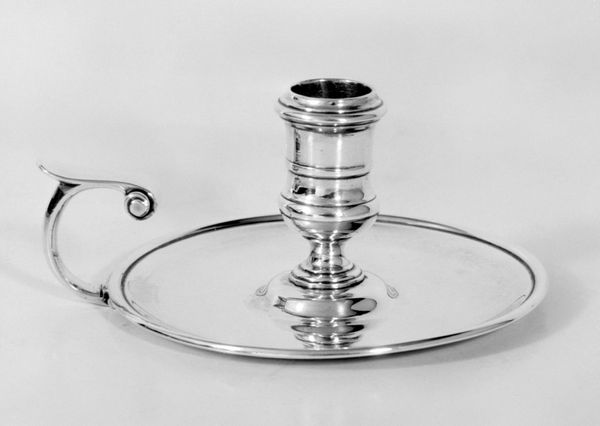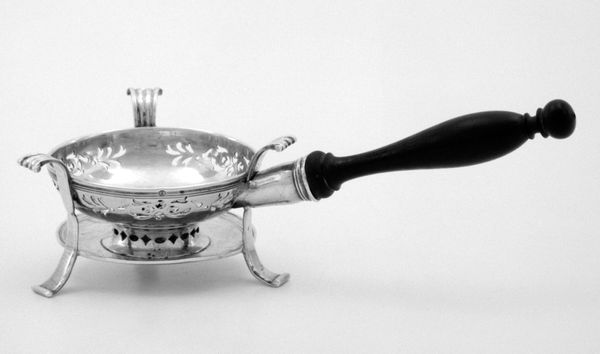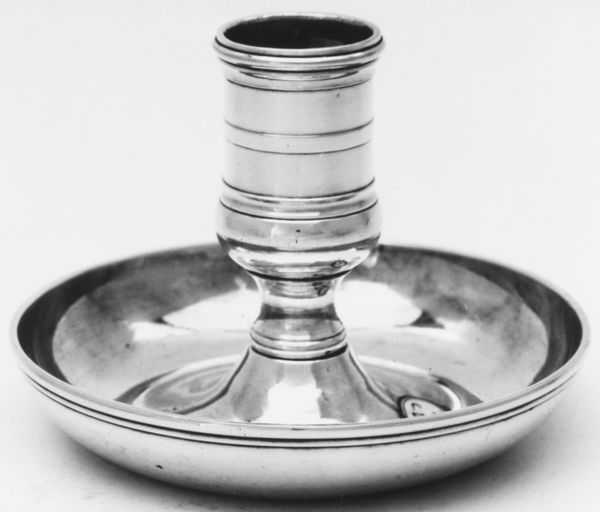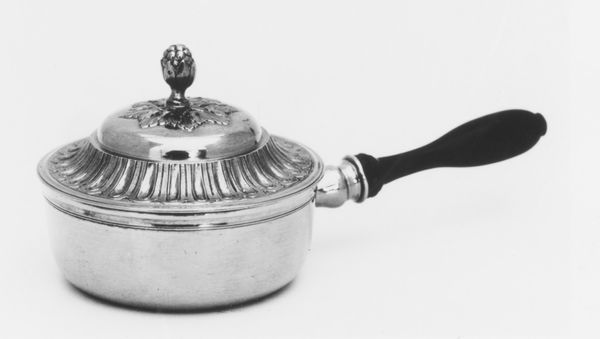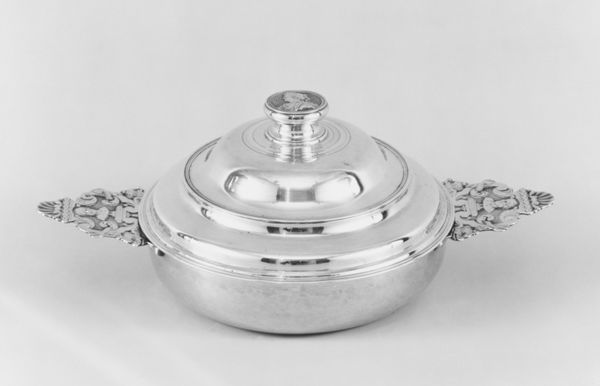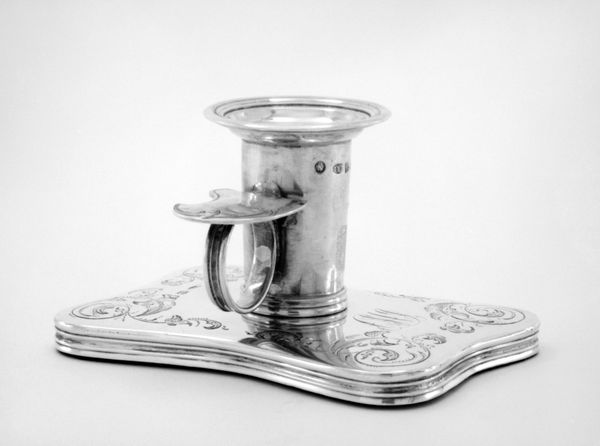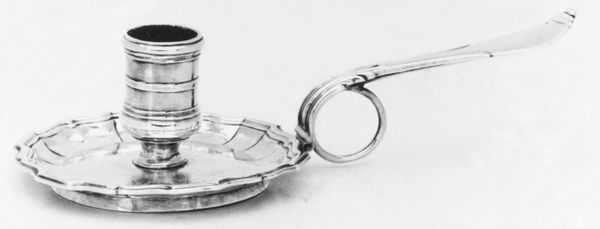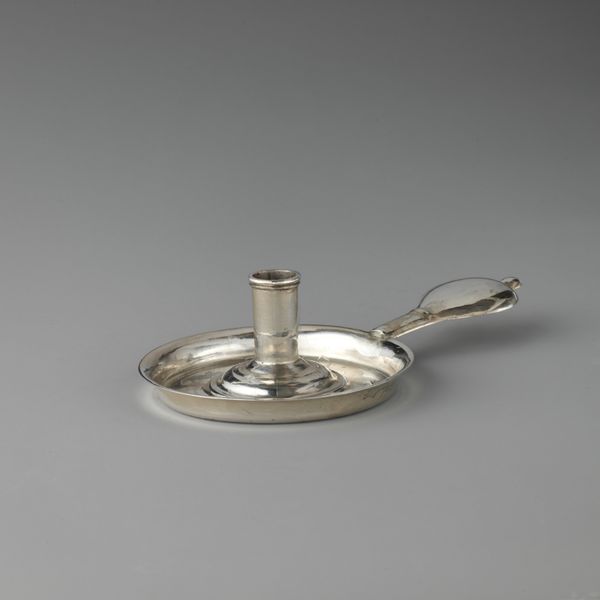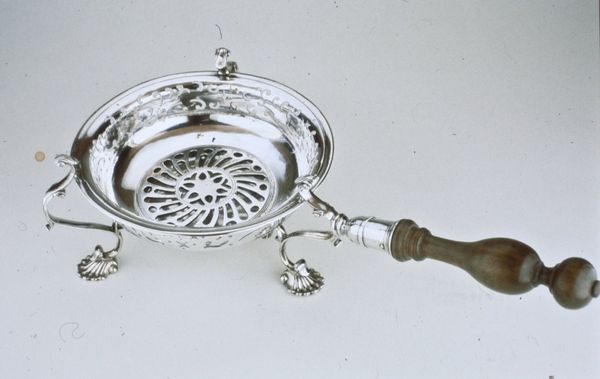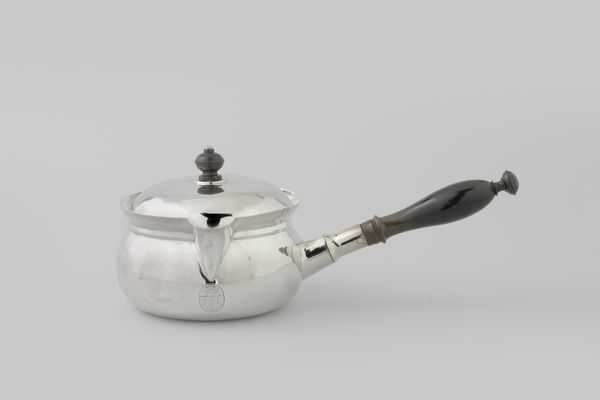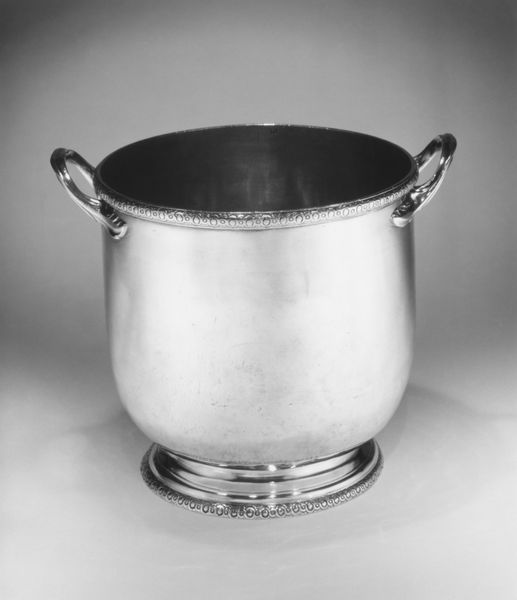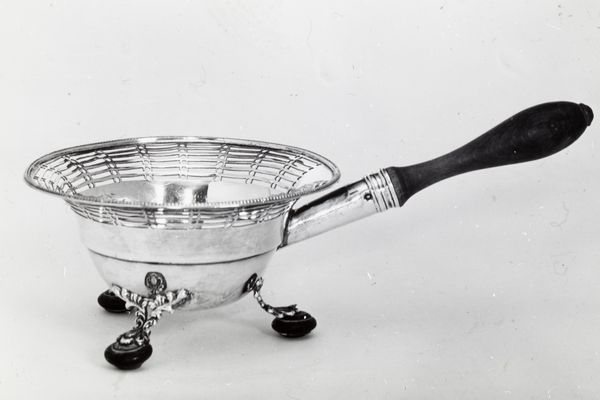
silver, metal, sculpture
#
silver
#
baroque
#
metal
#
sculpture
#
decorative-art
Dimensions: Overall: 2 1/16 × 4 1/8 × 8 3/4 in. (5.2 × 10.5 × 22.2 cm)
Copyright: Public Domain
Curator: Here we have a silver chamber candlestick, dating from the period between 1700 and 1750. It’s part of the Metropolitan Museum of Art’s collection. Editor: It's surprisingly austere, isn't it? Almost minimalist for something from the Baroque era. I’m drawn to the repetition of circular forms, balanced by the elongated handle. Curator: These chamber candlesticks were very practical objects in their time. Servants would have used them to light the way for their masters through darkened hallways and chambers. This one reflects the increasing demand among wealthier classes for refined, portable lighting solutions that indicated not only status but personal security during the night. Editor: The detail around the edge, almost a twisted rope, leads the eye pleasingly along the circumference of the piece. I also note the fluted detailing of the holder. But it all speaks to the function of the holder; to catch any dripping wax, as well as containing the light. Curator: Silverware in this period reflected societal hierarchies, being both useful objects and status symbols, and thus were heavily integrated into social performance and class distinctions. Its existence is inherently entwined with the socio-economic fabric of the era, revealing what people of importance desired. Editor: Yes, its very shape telegraphs "refinement" and "ease." It suggests an effortless grace even in the basic act of illuminating darkness. The sleekness, the way the light would have played on its surface—it isn’t just functional; it transforms necessity into artistry. Curator: Absolutely, it also points to an audience that valued sophisticated craftsmanship alongside practicality. This chamber candlestick encapsulates how artistry permeated even the most functional parts of 18th-century life, reinforcing social identities through everyday interactions. Editor: Ultimately, this piece isn't just about shedding light, but about casting it in style—a little silver spotlight on Baroque-era living.
Comments
No comments
Be the first to comment and join the conversation on the ultimate creative platform.
